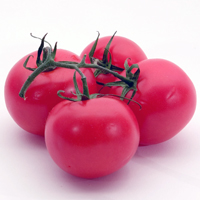Non-destructive method for monitoring tomato ripening based on chlorophyll fluorescence induction

Published:10 November 2020
Abstract Views: 2907
PDF: 1058
HTML: 304
HTML: 304
Publisher's note
All claims expressed in this article are solely those of the authors and do not necessarily represent those of their affiliated organizations, or those of the publisher, the editors and the reviewers. Any product that may be evaluated in this article or claim that may be made by its manufacturer is not guaranteed or endorsed by the publisher.
All claims expressed in this article are solely those of the authors and do not necessarily represent those of their affiliated organizations, or those of the publisher, the editors and the reviewers. Any product that may be evaluated in this article or claim that may be made by its manufacturer is not guaranteed or endorsed by the publisher.
Similar Articles
- Adeshina Fadeyibi, Zinash D. Osunde, Evans C. Egwim, Peter A. Idah, Performance evaluation of cassava starch-zinc nanocomposite film for tomatoes packaging , Journal of Agricultural Engineering: Vol. 48 No. 3 (2017)
- Hongbo Wang, Zhicheng Xie, Yongzheng Yang, Junmao Li, Zilu Huang, Zhihong Yu, Fast identification of tomatoes in natural environments by improved YOLOv5s , Journal of Agricultural Engineering: Vol. 55 No. 3 (2024)
- Jiangui Zhao, Tingyu Zhu, Zhichao Qiu, Tao Li, Guoliang Wang, Zhiwei Li, Huiling Du, Hyperspectral prediction of pigment content in tomato leaves based on logistic-optimized sparrow search algorithm and back propagation neural network , Journal of Agricultural Engineering: Vol. 54 No. 4 (2023)
- Roberto Romaniello, Giorgio Peri, Alessandro Leone, Fluorescence hyper-spectral imaging to detecting faecal contamination on fresh tomatoes , Journal of Agricultural Engineering: Vol. 47 No. 1 (2016)
- Gabriella Impallomeni, Francesco Barreca, Agrivoltaic systems towards the European green deal and agricultural policies: a review , Journal of Agricultural Engineering: Vol. 56 No. 1 (2025)
- Ernest Ekow Abano, Hai Le Ma, Wenjuan Qu, Thin-layer catalytic far-infrared radiation drying and flavour of tomato slices , Journal of Agricultural Engineering: Vol. 45 No. 1 (2014)
- Asiwan Kultongkham, Supakit Kumnon, Tawan Thintawornkul, Teeranoot Chanthasopeephan, The design of a force feedback soft gripper for tomato harvesting , Journal of Agricultural Engineering: Vol. 52 No. 1 (2021)
- Bayu Taruna Widjaja Putra, Wahyu Nurkholis Hadi Syahputra, Parawita Dewanti, Effect of different photoperiod regimes in combination with natural and artificial light on nutrient uptake in bok choy (Brassica rapa L.) using an internet of things-based hydroponics system , Journal of Agricultural Engineering: Vol. 55 No. 3 (2024)
- Andrey Linenko, Bulat Khalilov, Timur Kamalov, Marat Tuktarov, Damir Syrtlanov, Effective technical ways to improve the vibro-centrifugal separator electric drive for grain cleaning , Journal of Agricultural Engineering: Vol. 52 No. 2 (2021)
- Bhola Paudel, Jayanta Kumar Basak, Seong Woo Jeon, Nibas Chandra Deb, Sijan Karki, Hyeon Tae Kim, Development and field testing of biodegradable seedling plug-tray cutting mechanism for automated vegetable transplanter , Journal of Agricultural Engineering: Vol. 55 No. 2 (2024)
You may also start an advanced similarity search for this article.

 https://doi.org/10.4081/jae.2020.1098
https://doi.org/10.4081/jae.2020.1098 










